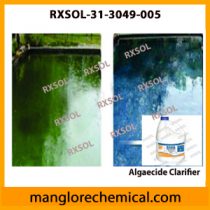Cyanuric acid is a chlorine stabilizer for swimming pools. It is usually referred to as “stabilizer”. It should not be confused with muriatic acid which is often used to adjust the pH.
Cyanuric acid combines with free chlorine in pool water, protecting it from the sun’s ultraviolet rays and reducing chlorine loss. Properly managed, cyanuric acid can reduce the amount of chlorine needed to maintain the minimum chlorine residual in an outdoor pool. Many chemical suppliers recommend that the optimal range for cyanuric acid is 30-50 ppm, although a study published by the University at California at Davis1 , indicates that there is still significant savings in chemical costs with cyanuric acid levels as low as 2 or 3 ppm.
Lowering the hypochlorous acid concentration can have a significant impact on the rates of any reaction for which hypochlorous acid is involved in a rate limiting step. Specifically disinfection and oxidation of contaminants can be slowed by the lowered hypochlorous acid concentration.Generally speaking, the rate of disinfection or the rate of oxidation of a contaminant in the water by hypochlorous acid could be described by the following equation:
–dN/dt = k [HOCl]a N
in which:
N represents a microbial concentration (such as deduced by a plate count) of the microbe to be killed or the concentration of the oxidizable species (such as various organic compounds, breakpoint susceptible chloramines, sulfide, or nitrite) to be destroyed;
–dN/dt represents the rate of loss of the microbe or oxidizable material;
k represents a rate constant; a is a positive real number that is specific to the type of reaction involved; and
[HOCl] represents the hypochlorous acid concentration.




Reviews
There are no reviews yet.